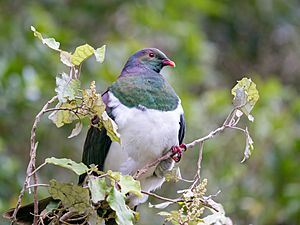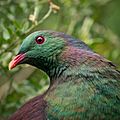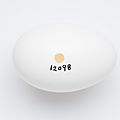Kereru facts for kids
The kererū (scientific name: Hemiphaga novaeseelandiae) is the only type of pigeon that naturally lives in New Zealand. It's a very large bird, easy to spot, and you can often hear its wings making a loud whooshing sound when it flies. The kererū is super important for New Zealand's forests because it's the only living native bird that can swallow large fruits whole. This means it helps spread the seeds of many native trees, helping new plants grow.
Long ago, kererū were an important food source for the Māori people. However, there are far fewer kererū today than before Europeans came to New Zealand. This is mainly because new animals like cats, ferrets, stoats, possums, and rats were brought to the country, and they hunt kererū and their eggs. Also, a lot of their forest homes were cut down. Because their numbers are low, it is now against the law to hunt kererū.
What's in a Name?
The most common name for this special bird is 'Kererū'. But in some parts of New Zealand's North Island, people call it kūkū or kūkupa. Sometimes, kererū are also called 'wood pigeon'. However, they are not the same as the wood pigeons (Columba palumbus) found in places like Europe or Asia.
How to Spot a Kererū
Kererū are quite big birds. They usually weigh between 550 and 850 grams, which is about the same as a large loaf of bread! They have a bright white belly and a head, shoulders, and wings that are a dark green or blue color. This green-blue color is iridescent. This means it's shiny and can show many different shades of blue, green, and purple when the sunlight hits it just right.
Images for kids
-
The extinct Norfolk pigeon (H. n. subspecies spadicea), a relative of the kererū.
See also
 In Spanish: Paloma maorí para niños
In Spanish: Paloma maorí para niños







